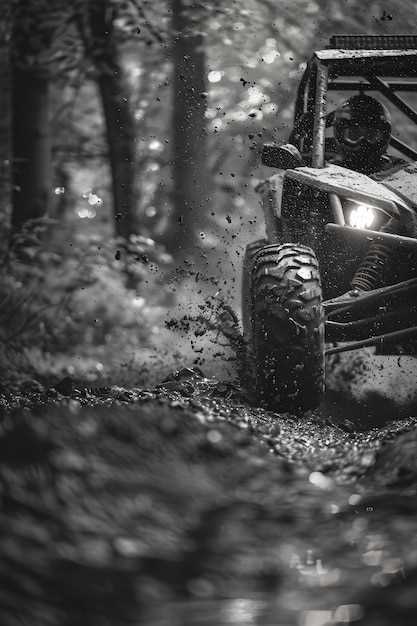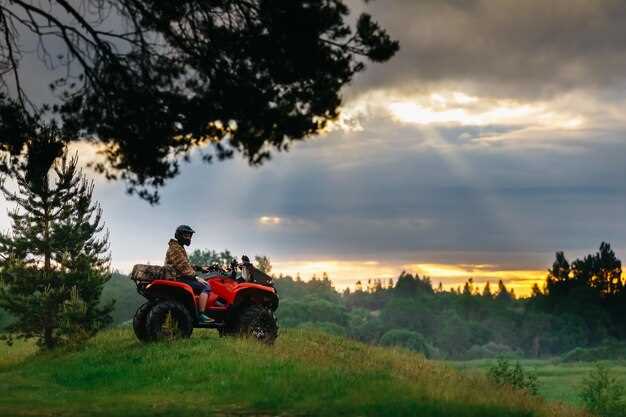
Embarking on an ATV adventure during the night can be an exhilarating experience, but it also presents unique challenges that require careful consideration. One of the primary concerns is visibility. When the sun sets, the environment changes drastically, making it essential for riders to be equipped with appropriate lighting and reflective gear. Ensuring adequate visibility not only enhances the riding experience but also significantly reduces the risk of accidents.
Before hitting the trails after dark, it’s crucial to familiarize yourself with the area you plan to ride in. Nighttime can obscure familiar landscapes, confusing even the most experienced riders. Mastering the terrain while maintaining visibility is key to a safe ride. Consider scouting the trail during daylight hours to identify potential hazards and landmarks that can serve as navigational aids later on.
In this article, we will explore a variety of tips and best practices aimed at maximizing safety during night ATV rides. From essential gear to practical riding techniques, these guidelines will help you ensure that every nightly adventure is both thrilling and secure. Stay tuned for insights that can transform your nighttime excursions into unforgettable experiences!
Choosing the Right Lighting for Enhanced Visibility

When planning a night adventure on your ATV, selecting appropriate lighting is crucial for ensuring safety and enhancing visibility. The right lights not only illuminate your path but also make you more visible to others. Here are some key factors to consider when choosing lighting for your ATV:
- Types of Lights:
- LED Lights: These are energy-efficient, long-lasting, and provide bright illumination. They are ideal for off-road conditions.
- Halogen Lights: While less efficient than LEDs, halogen lights offer a warm light quality and are often used in standard headlights.
- Light Bars: These provide broad coverage and can be mounted on various parts of the ATV for enhanced visibility.
- Brightness Level: Choose lights with adjustable brightness levels to ensure optimal illumination for different night conditions.
- Beam Patterns:
- Flood Beams: Ideal for close-range visibility, suitable for wooded trails and rough terrain.
- Spot Beams: Effective for long-distance visibility, allowing you to see further down the path.
- Durability: Ensure the lights are weather-resistant and can withstand rough terrains, vibrations, and impacts during rides.
- Mounting Options: Consider how and where you will mount your lights to achieve the best visibility. Choose adjustable mounts for flexibility.
Investing in quality lighting equipment designed for nighttime ATV riding will greatly enhance your visibility and overall safety. Be sure to test your lighting system before heading out, ensuring it meets your needs for night riding adventures.
Essential Safety Gear for Night ATV Riding
When embarking on exciting night riding adventures with your ATV, ensuring your safety is paramount. The darkness can obscure various hazards, making the right gear essential for a secure experience.
First and foremost, a quality half helmet or full-face helmet is crucial. It protects your head and provides visibility while reducing fatigue from wind. Choose a helmet specifically designed for night riding, featuring a visor that minimizes glare from headlights.
Equally important is wearing reflective clothing. This attire not only keeps you visible to others but also enhances your ability to see obstacles in low light. Look for jackets and pants equipped with reflective strips or bright colors that stand out against the night sky.
Another key component of your gear is gloves designed for grip and protection. They should offer dexterity while ensuring full control of your ATV’s handlebars. Consider gloves with reflective elements to further increase visibility.
Don’t forget about eye protection. Whether you use goggles or a face shield, they are essential for shielding your eyes from debris that can be hard to spot at night. Opt for lenses that reduce glare and enhance contrast.
A reliable headlamp or flashlight should also be part of your gear. These devices help you navigate the terrain and identify potential hazards. Choose a headlamp with adjustable brightness and a wide beam to illuminate the path ahead effectively.
Lastly, consider equipping your ATV with LED lights. Extra lighting can significantly enhance your visibility and help you identify obstacles in your surroundings. Furthermore, ensure your vehicle’s headlights are functional and adjustable for optimal performance.
By investing in this essential safety gear, you can ensure a secure and thrilling night riding experience on your ATV.
Techniques for Navigating Trails After Dark

When riding an ATV at night, visibility becomes a critical factor in ensuring safety. Always equip your vehicle with high-quality lights, including headlights and additional spotlights. This will enhance your ability to see obstacles on the trail and help other riders see you.
Familiarize yourself with the trail during the day before attempting to ride at night. Knowing the layout, potential hazards, and landmarks will significantly improve your confidence and navigation skills after dark. Use waypoints or GPS devices to track your route and avoid getting lost in unfamiliar territory.
When traversing trails, reduce your speed to maintain control and react swiftly to unexpected hurdles. Nighttime can distort depth perception, so adjusting your pace allows for better handling of turns, dips, and uneven terrain. Encourage your riding group to stay close together while maintaining safe distances to avoid accidents.
Utilize reflective gear and accessories to enhance visibility for yourself and those around you. Wearing bright colors and using reflective tape on your ATV can make it easier for you to be seen by others. This can be crucial during activities on shared trails.
Sound plays a key role at night as well. Pay attention to environmental noise, which can help you identify other riders or animals on the trail. Communicate effectively with your group through hand signals or pre-agreed verbal cues, since audio can be muffled by distance and terrain.
Lastly, ensure your equipment is in proper working condition. Check lights, brakes, and tires before heading out for a night ride. An unexpected mechanical failure can be much more dangerous in the dark, so thorough preparation is essential for a safe and enjoyable experience.
 Skip to the content
Skip to the content 